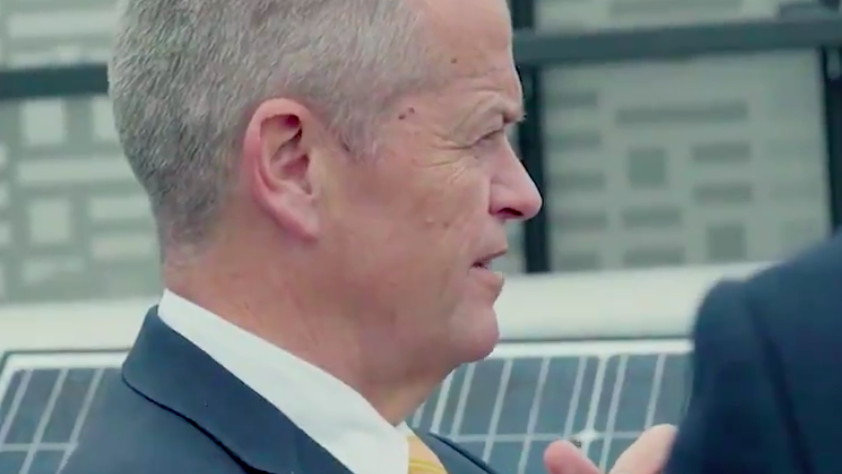Building on its previously announced clean energy policy goals, Labor has released the final component of it climate energy policy looking to boost Australia’s sluggish decarbonization of the transport sector.
The party is proposing to introduce a national EV target of 50% of new sales by 2030, and 50% for the government fleet by 2025, as well as introduce an upfront tax deduction of 20% to purchase EVs for business purposes at more than $20,000 as part of private fleets.
Consistent with Climate Change Authority advice, Labor has also committed to a new pollution regulation of 105g CO2/km for light vehicles, which is the same in the U.S. Importantly, this standard will be imposed on car retailers, not manufacturers. The party said it would consult on coverage and the timeline to phase in the change rather than impose it immediately.
“Cleaner cars and transport aren’t just good for the environment – they are cheaper to run,” Labor said in its policy statement. “But Australia lags behind our competitor countries, whether it’s in electric vehicle take-up, or vehicle fuel efficiency. We have ten times lower electric vehicle take-up than the global average, and we’re at risk of being left behind.”
While the Coalition government has not come up with a coherent EV policy and targets, the Labor EV target announcement comes off the back of the Greens’ climate and energy action plan, which calls for a 100% EV target in new light passenger vehicles sales by 2030.
The Labor policy release states that transport emissions make up almost 20% of Australia’s emissions and are a fast growing source of pollution. The inexorable growth of transport-related emissions has also been reported in the latest National Energy Emissions Audit from The Australia Institute, which has urged any future government to prioritize fuel efficiency standards.
To underpin the transition in the transport sector, Labor has prepared an electric vehicle innovation and manufacturing strategy and will work with industry to create new job opportunities.
While Australia’s EV sales figures are weak – according to the latest available figures from the Electric Vehicle Council, Australians bought just 2,284 vehicles in 2017 – drivers are reportedly keen to make the switch, with government backing.
“This government fleet target will send a strong signal to the global industry that we expect cost competitive vehicles to be available for the Australian market. Government electric vehicle fleets will also be important in developing a second hand market,” Labor said in a statement.
On top of that, Labor plans to establish an EV COAG agenda to improve coordination of electric vehicle take-up and related planning, with a focus on deploying EV charging infrastructure.
Previously announced and confirmed
In November, Labor came up with a plan for Australia’s energy sector with renewables and the energy transition as major pillars of the strategy. The party pledged to revive the National Energy Guarantee with a higher emissions reduction target of 45% by 2030, and to push towards a headline goal of 50% renewables by 2030. These goals have been confirmed in the final climate energy package it will take to the federal election next month.
To boost the share of renewable energy, Labor has pledged to double the original investment in CEFC by $10 billion to support new generation and storage, concessional loans for household purchases of solar and battery systems, commercial community renewables projects and the transformation and growth of new and existing industries.
It also plans to encourage the uptake of household solar and battery systems by setting a target of one million household battery systems by 2025 and providing a $2,000 rebate for 100,000 households on incomes of less than $180,000 per year to purchase and install battery systems, as well as low-cost loans for households.
Through a Neighbourhood Renewables Program, it plans to ensure renters and social housing residents can benefit from cheaper and cleaner renewable energy. Labor will establish community power hubs to support the development of projects in local communities – such as solar gardens on apartment rooftops, community wind farms and energy efficiency upgrades for social housing.
The policy blueprint also calls for a stricter and broader safeguard mechanism, an existing Coalition policy, to cut pollution of Australia’s biggest emitters and apply to a greater number of businesses that emit more than 25,000 tonnes of carbon dioxide per year (the threshold is currently 100,000 tonnes), as well as allow for creation and sale of offsets.
As announced on Monday, Labor will not use carryover of Kyoto credits to meet its emissions reduction target. This is a point of differentiation from the Coalition government which plans to carry over Kyoto credits to reach its much weaker emissions reduction target of 26% by 2020.
This content is protected by copyright and may not be reused. If you want to cooperate with us and would like to reuse some of our content, please contact: editors@pv-magazine.com.









4 comments
By submitting this form you agree to pv magazine using your data for the purposes of publishing your comment.
Your personal data will only be disclosed or otherwise transmitted to third parties for the purposes of spam filtering or if this is necessary for technical maintenance of the website. Any other transfer to third parties will not take place unless this is justified on the basis of applicable data protection regulations or if pv magazine is legally obliged to do so.
You may revoke this consent at any time with effect for the future, in which case your personal data will be deleted immediately. Otherwise, your data will be deleted if pv magazine has processed your request or the purpose of data storage is fulfilled.
Further information on data privacy can be found in our Data Protection Policy.